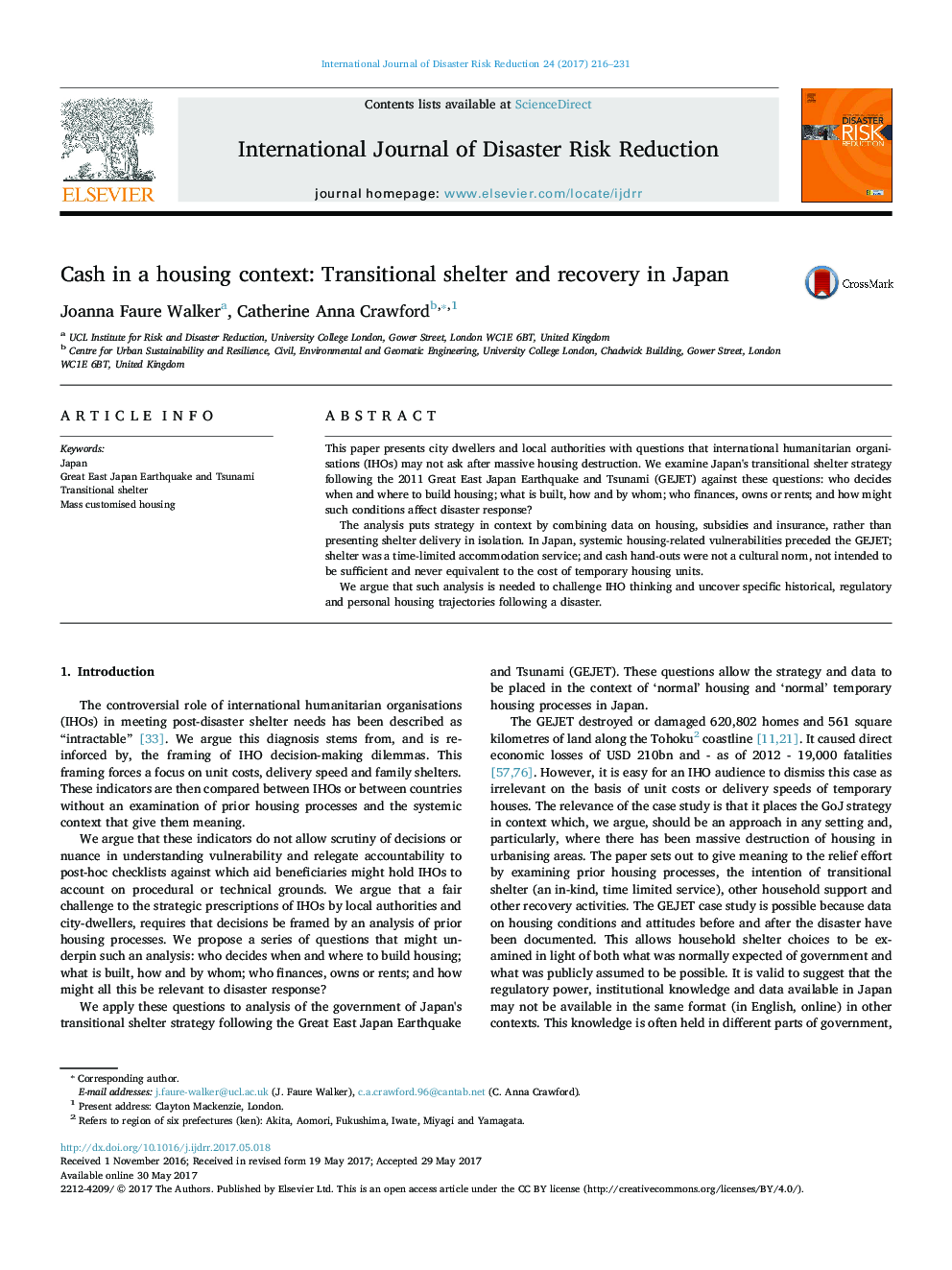| Article ID | Journal | Published Year | Pages | File Type |
|---|---|---|---|---|
| 5116030 | International Journal of Disaster Risk Reduction | 2017 | 16 Pages |
This paper presents city dwellers and local authorities with questions that international humanitarian organisations (IHOs) may not ask after massive housing destruction. We examine Japan's transitional shelter strategy following the 2011 Great East Japan Earthquake and Tsunami (GEJET) against these questions: who decides when and where to build housing; what is built, how and by whom; who finances, owns or rents; and how might such conditions affect disaster response?The analysis puts strategy in context by combining data on housing, subsidies and insurance, rather than presenting shelter delivery in isolation. In Japan, systemic housing-related vulnerabilities preceded the GEJET; shelter was a time-limited accommodation service; and cash hand-outs were not a cultural norm, not intended to be sufficient and never equivalent to the cost of temporary housing units.We argue that such analysis is needed to challenge IHO thinking and uncover specific historical, regulatory and personal housing trajectories following a disaster.
